At Sibers, we often develop custom educational solutions. And we highly appreciate the experience and expertise we gained during all these years. In order to share, we showcase the last ten years’ evolution of e-learning trends through our selected projects.
We faced our first e-learning project more than ten years ago. Starting in 2007 with a Firefox toolbar for learning languages and an Online Role-Playing Game with social networking elements for pre-school kids, we have developed nearly 50 projects connected to education and e‑learning by now.
Our portfolio features e-learning platforms, training applications, vocabulary learning solutions, gamification-based learning. Moreover, aside from the variety of forms, we’ve worked with a great variety of educational spheres: history, languages, medical education, pre‑school, music, dancing, sports, etc.
At the Turn of 2010s: Pure Content
Back to the turn of the 2010s, e‑learning, as well as education, was focused on the content and its quality. At that time, we did a couple of exam training apps for chemistry and maths. The main idea behind them was to engage students with a new form of preparation and make the checking process easier for teachers.
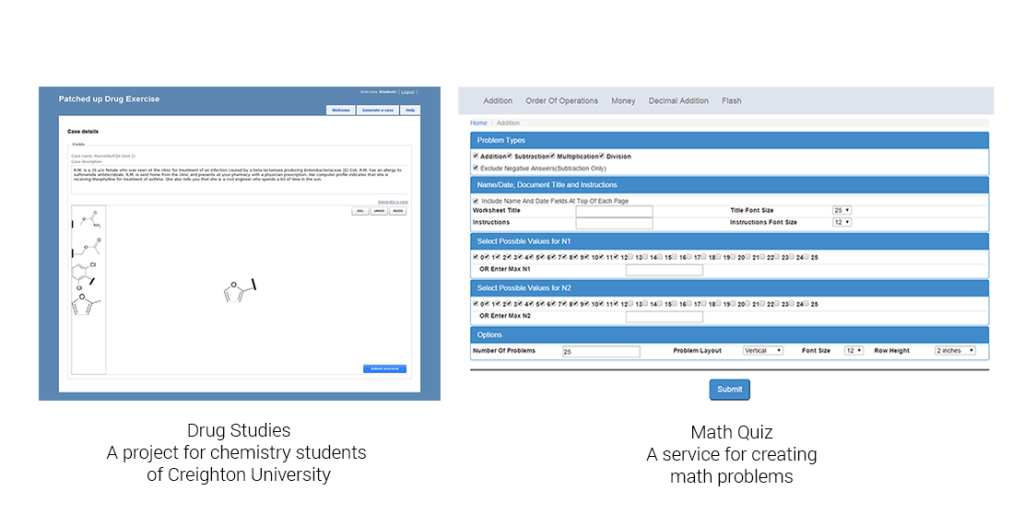
2010—2015: Interactive Content, Gamification, Mobile Learning
Near the early 2010s, interactive content, gamification, and mobile learning entered the game and simultaneously became the hottest trend in e-learning. The new approach to education stated that the learning process did not have to be boring and routined. Involvement and fun were the advantages that promoted e-learning as an alternative way of getting knowledge. The concept became extremely popular and widely spread.
Taking gamification as a basis, we’ve made several apps for pre‑school kids.
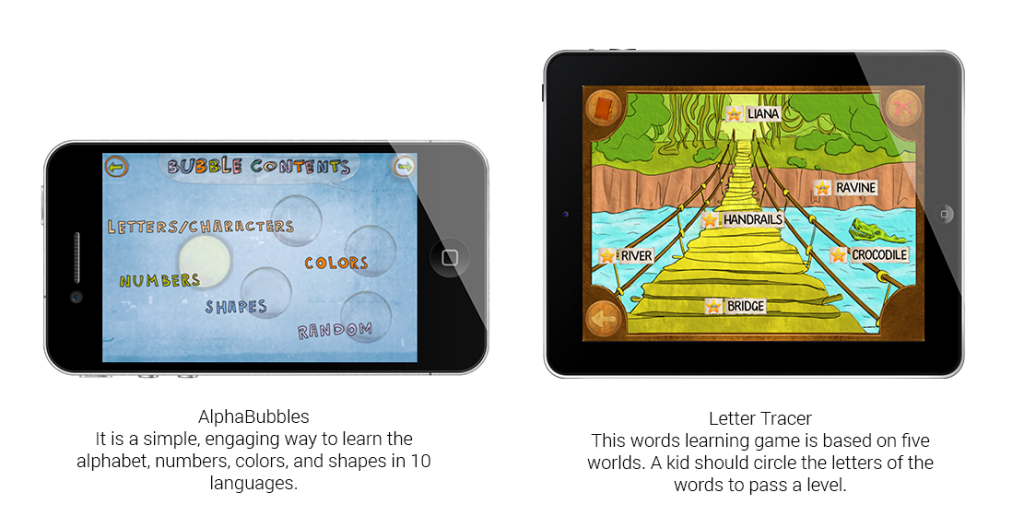
In 2010, we developed AlphaBubbles — an educational game designed to help children learn different languages by building upon traditional language basics.
Later it emerged that interactive content was efficient for studying narrow topics. Interactive maps, timelines, and quizzes for self‑check turned out to be the practical methods for a proper understanding of a historical period or a personality.
In 2013, we made an iPad application for learning American presidents. Each president has his place on the timeline according to the period of his governing. The timeline navigates by scrolling left and right with the swipe of a finger. We also have done a similar app but with English monarchs.
In 2014, we created the D-Day App. It is an illustrated interactive map narrating the process and the timeline of the Normandy landings (commonly known as D‑Day) on 6 June 1944. It highlights the main events of the operation and development of the campaign.
2015—Nowadays: Methodology
The new ways of providing information were very attractive, but still, the approach was content-centered and, therefore, it could not be a reasonable replacement for traditional education. The main advantage of the traditional approach is a profound methodology that helps the student develop a variety of skills relatable to the subject.
So, consequently, the next step in e‑learning evolution was the focus on the teaching methods. We are experiencing its peak now. Microlearning, personalized learning, and blended learning are the trends that interconnect and complement each other perfectly.
Microlearning divides the course outline into small learning units and short-duration activities. Segmenting the information into small topical parts increases student’s attention and retention. Research shows that it also increases the exam pass rates (up to 18%).
Let’s see, for example, the Chinese learning app Babu, which we released in 2018‑2019. This app, available on iOS and Android, allows English speakers to learn Chinese, starting from characters through vocabulary to sentences. The learning process bases on flashcards. Each of them presents a piece of new information (a character, a word, or a sentence) and provides transcription, translation, animation to demonstrate how to write characters step‑by‑step, usage examples, audio version, and a tone guide with a scheme image.
The app uses a spaced repetition method of learning, which is a technique for efficient memorization. It presupposes a repeating review of content while following a schedule. After acquaintance with another portion of cards, the users proceed with exercises: reading comprehension, listening comprehension, and tone memory. The Android app, beyond that, allows the users to practice writing skills, using the device as a writing pad.
Why do we use this app as an example?
It embraces the main educational trends: microlearning and personalization. Chinese language learning is rather exceptional. A student must get acquainted with characters, syllabic structure, and an absolutely different phonetic system. It is easier to explore such a large territory in small steps. Every time a user closes the app, the progress is saved. One can go back to learning at any moment and choose the most comfortable pace. The combination of methods and the variety of exercises cover all the sides of language learning: phonetics, grammar, lexis, and specific for Chinese calligraphy and writing.
Another trend most relevant nowadays is blended learning. Blended learning is a combination of teaching methods that allows us to take the best from traditional education in the classroom and new digital possibilities. Virtual classrooms, learning platforms, online courses platforms stand on the same idea.
In 2020 we worked on Learnlink. It is a platform for conducting online lessons. At its core there is a learning “room” that consists of a whiteboard and a web call possibility. We made an intuitive layout with an adjustive whiteboard and responsive instruments enhancing such basic operations as undo, redo, zooming, selecting, moving objects, etc. The platform also allows group calls with sharing and recording the screen, writing text, and drawing on the whiteboard during the call.
A platform with virtual classrooms has proved to be a highly necessary feature now. Individual tutoring, school lessons during the pandemic, and various seminars are not the only practices. There is a great potential for any kind of learning and meeting.
What’s next?
In the lists of upcoming trends, there are immersive learning, data analytics involvement, and user‑generated content. We would accentuate the importance of data analytics as a tool to increase the competitiveness of any solution, which also allows implementing a personalization feature.
If you want to go deeper into custom e-learning development, you are welcome to view our e-learning outsourcing insights on https://sibers.com/outsourcing-theory/industries/education
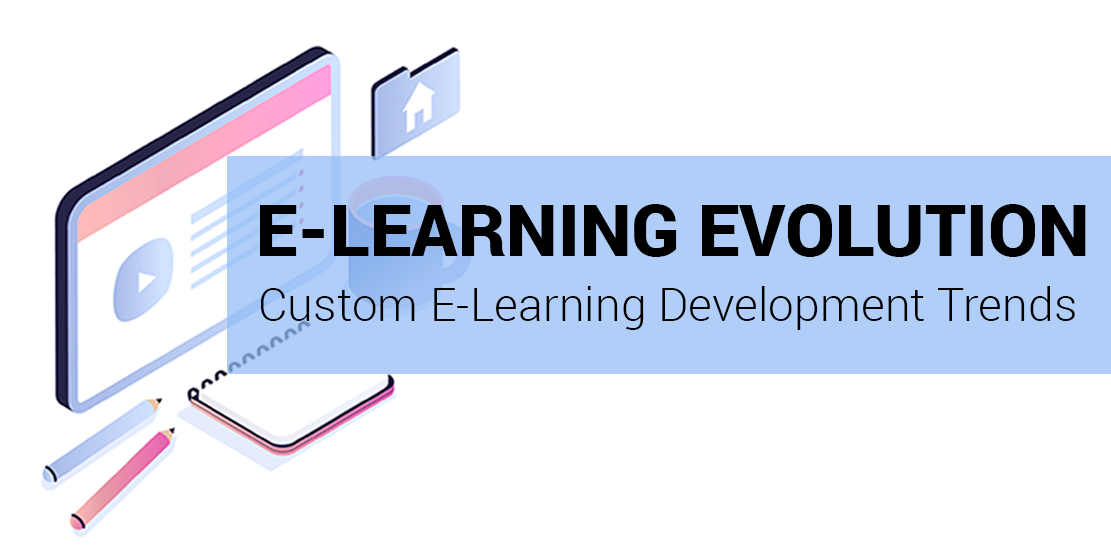
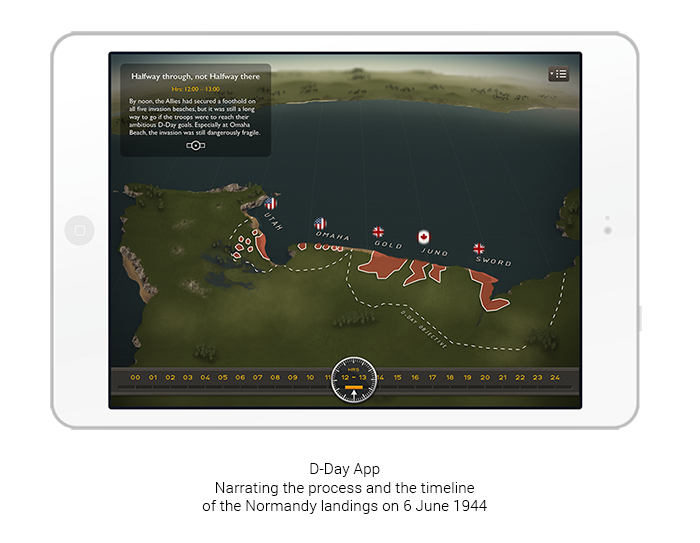
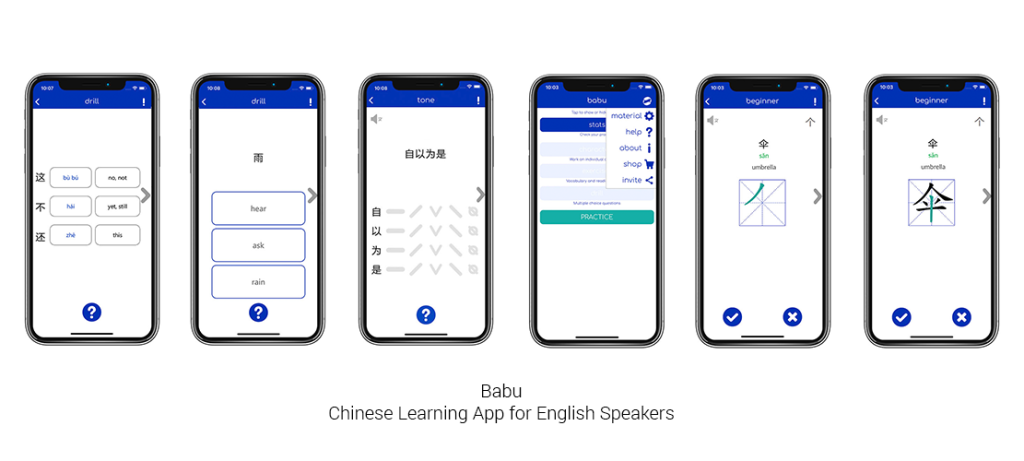
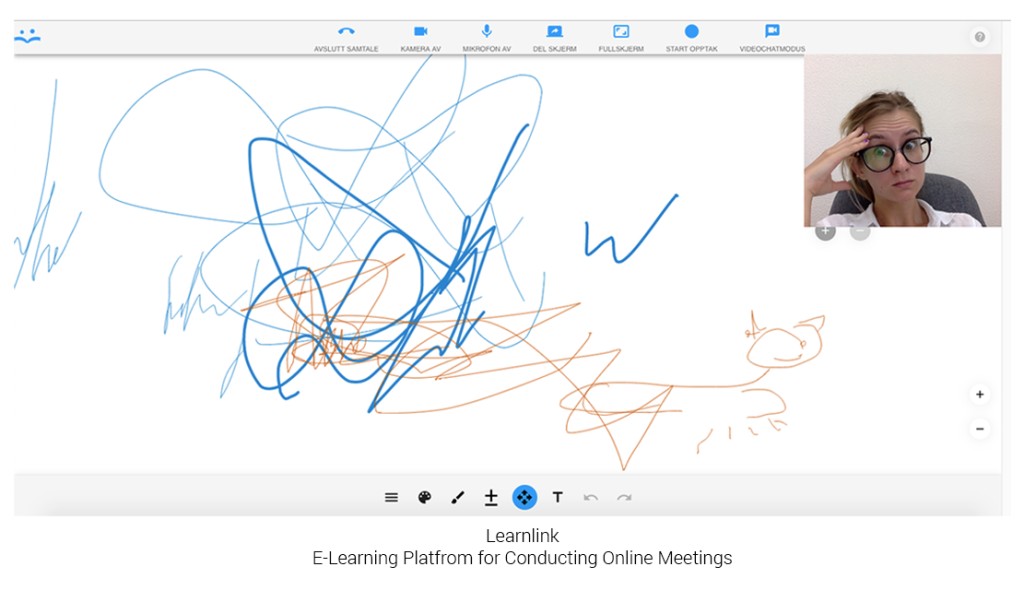
how platform for conducting online lessons
Hello! If you are interested in developing your own platform for conducting online lessons, consider contacting us or any other development service provider.